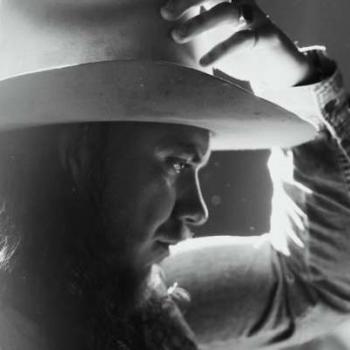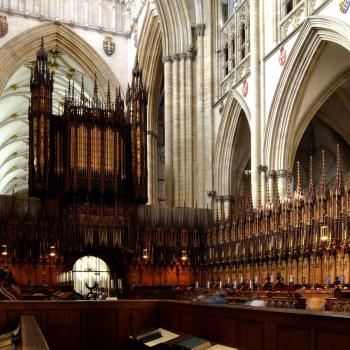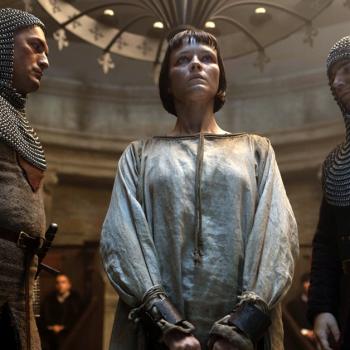
It’s not every day that you see Judas eating coffee and cake with friends or Jesus lounging around in Lederhosen.
Of course, it’s not every day one is in Oberammergau, a village in the far-south of Germany, for the world-famous Passion Plays (Passionsspiele).
The Passion Plays began with a 1633 vow amid turmoil brought on by war and the bubonic plague. The villagers promised to perform the final week of Jesus’ life every ten years if God would spare them from further calamity. They staged the first Passion Play in 1634 and the nearly 400-year tradition has continued to this day.
With performances only every decade — twelve years this time around, with COVID-related delays — over a million visitors make the trek to the Bavarian town between May and October.
The plays aren’t only a once-in-a-decade opportunity, they’re also a chance to reflect on the intersections of religion and tourism, business, and cultural conversations around race and ethnicity.
Atheists and Jews, Protestants and Muslims
If it’s not every day that one sees Jesus sporting leather pants, it’s also not every day that one is sitting at a German brewery listening to Jewish and Catholic theologians debate the finer points of Gospel narratives and weighing up arguments related to the “historical Jesus.”
But there I was at the Ammergauer Maxbräu enjoying a wheat beer and the back-and-forth about the Passion Plays’ centuries-long struggles with their representation of Jews and Judaism and eventually, their appropriation by the Third Reich.
The consensus was that theater director Christian Stückl — who first took the reins in 1990 — has updated the plays, translating them for a more cosmopolitan era.
Stückl has revamped the 100-year-old script, originally written by local pastor Joseph Alois Daisenberger, ridding it of latent antisemitism or any suggestion that Jews are deicides — “God killers.”
Alongside the intentional rectification of past antisemitic tropes, Stückl has also presided over a time when Protestants, atheists, agnostics, and Muslims have joined the cast and crew.
This, he said, is only natural. As Europe, Germany, and Oberammergau change, so too must the plays.
While participants still engage with the biblical narrative (even traveling to the “Holy Land” as part of their preparations) and engage in intense discussions about its relevance and meaning in the modern world, the “religious” elements of the story recede into the background, said Stückl. What comes to the fore now is the very human struggle to pursue justice and mercy amid diversity and difference.
Or, as Frederik Mayet, one of the actors playing Jesus this year, said, the plays are more about “the pursuit of greater coexistence” among Oberammergauers, theater goers, and their own communities back home, both near and far.
One part pilgrimage, one part Bavarian Disneyland
As quaint as it may be, Oberammergau is a village caught somewhere between the sacred and the kitsch. Framed by the rugged alps and featuring numerous pastel-colored, wood-timbered houses, it’s easy to forget the religious motivations and moments that make this not-so-small village what it is today.
But here in Ogau — as it is known by locals — what we call the sacred and the profane are all mixed up. The journeys that people make to Oberammergau are also a bundle of this and that, here and there, or, as one tour guide put it, “between pilgrimage and tour.”
As I covered the Passion Plays for Christianity Today over the last two years, I spoke to numerous “pilgrims” planning to make the journey. Their motivations were many. Some expressed explicit religious reasons for going and others indicated more touristic purposes. Most were a mingling of both.
As pastor and tour-host David Mahsman said, pilgrims “enjoy the sights and sounds of Europe, but then have discussions and devotions while drinking German beer.”
Rather than exception to the rule, such “pilgrimages” are quite conventional. In Walking Where Jesus Walked, Hillary Kaell talked to Catholics and evangelicals before, during, and after their pilgrimages to the “Holy Land.”
What she discovered was that pilgrimage is a hybrid harmony between holy and human, divine and mundane. The journey that pilgrims take, and the interpretations that they give to their experiences are tied to the ordinary, the everyday, and their roles, rituals, and realities at "home."
Not only do pilgrims grapple with the tension between the material and the mystical, commodification and religious control, the home and the "Holy Land" during their journey, but also betwixt and between places like Apache Junction, Arizona and the Arab Quarter in Jerusalem.
Those making their way to Oberammergau also bring their expectations — about Jesus, Bavaria, or beer — to bear on the experience, examining what their religious identifications mean through the prism of the Passion Plays and vice versa.
They not only bring home along with them on their sometimes-not-so-holy expeditions, but often bring a piece of Oberammergau back with them. Whether it be a hat, a cuckoo clock, or a $420 hand-carved crucifix, these knickknacks become conduits for more than a trip to southern Germany, but a journey caught somewhere between the commercial and ecclesiastic.
The business of pilgrimage
A few days before the premier, I was chatting with a local tour operator about what the Passion Plays mean for the local economy. Along with joy at their return, he also expressed relief at selling his business’s ticket allotment.
The firms representing Oberammergau mean business. They sell you a certain number of tickets and you’re expected to sell them all, with hotel packages and firm commitments. If you don’t, you’re responsible for the difference. I understand that the village can’t handle all of this on their own, but the company in charge is no joke. It’s a pressure to sell, all with Jesus crucified on the promotional material.
For Oberammergauers, the success of the Passionsfest is not only a matter of faith, but of the bottom line. People’s pocketbooks rely on the plays’ positive results. There is even a saying in the village when money gets tight: Passion wirds scho richten. In other words, “Passion will fix it.”
So it is with faith-based tourism.
In various forms across the world — from India to Israel, North Sumatra to Saudi Arabia — pilgrimages and faith-based tours are major money makers shaping not only the soul, but local economies. It is both life-affirming contemplation for the faithful and the lifeblood of the communities providing access to popular shrines or, in this case, performances.
According to estimates, religious travel generates some $8 billion (USD) annually, providing employment for people involved in various aspects of “pilgrimage tourism” — from tour operators and performers to souvenir stalls and pilgrims’ hostels and hotels, from an Ogau bookseller named Alex to a crucifix-carver named Michael.
Pilgrimages and spiritual tours are not religious despite these commercial characteristics, but powerful precisely because the dynamic tension between the seemingly commonplace and the consecrated, commoditization and religious meaning-making.
Religion is made in the practice of everyday life and — love it or hate it — economics have always been part of that process.
It is perhaps not-a-little ironic that the Passion Plays traditionally began with Jesus clearing out the temple marketplace and its ritual-related paraphernalia. Even in Jesus’ day — and long before he came on the scene — religion, trade, and commerce were involved in an enduring, spirited correspondence.
This serves as a reminder that although the commercialization of the Passion Plays may bring the economic realities of religion into heightened relief, they simply reflect the dynamic interplay of these tensions in the context of day-to-day life.
Such is the case with the other dynamics described above as well.
Rather than being phenomenal, the crossover between religion and tourism, the market, and the cosmopolitanization of the world, are really rather banal.
12/15/2022 10:08:10 PM





